
Unlike Japanese and Chinese folklore, Korean folklore is not a subject area that many explore, consider, or think about when studying Korean history and society. Even though they all share similar mythological beliefs, those of Korea are unique and feature many interesting creatures and legends. Ranging from faceless atrocities to supernaturals causing calamities, the creatures of Korean folklore will leave you terrified with some of the vicious acts and appearances that they take. Now, even though most are seen in a negative light, there are also some that are instead seen as guardians. Korean legends characterise a variety of mythical creatures, ghosts, monsters, and dragons. Many are derived from Chinese legends, but with their own unique Korean spin.
Bulgasari

It is an iron eating monster, it can also destroy nightmares and smallpox. As most myths and legends, they tend to be changed and would vary from one place to the other. But what remains of the description of its looks is that it has a bear like body and a nose of an elephant. This some what reminds me of the Japanese Baku because of the nose and nightmare destroying trait. Scary. This creature is also known as Bu Ke Sa 不可殺 in Chinese Mandarin language which means “can’t be killed”. From that name you know that this monster is invincible. In one of the legend, people tried killing it by all the means necessary and finally tried to burn it alive but to no avail. Lastly, only with a mysterious amulet given to a fortune teller who was also mysterious was the monster able to be killed.
Chollima
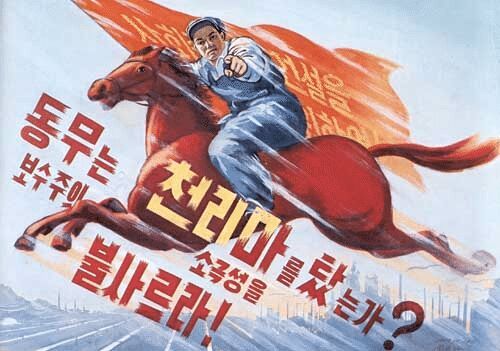
The term Chollima originates from the Chinese mythological flying horse. The word Chollima can be translated as “thousand li horse,” referring to its ability to travel 1,000 li (4000 kilometers) in a single day. It also was said that it could not be ridden by any person. It is known for accomplishing the most difficult tasks and to have led heroes to victory. This idea of Chollima was used by Kim Il-sung to energize the workers in North Korea to bring the country out of the rubble of the Korean War to obtain a better life and a more prosperous country in a short amount of time.

Gumiho: Legend of the Nine-Tailed Fox
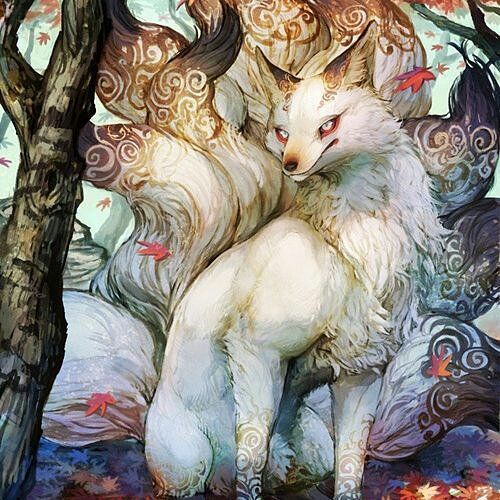
구미호/Gumiho is a Korean folk legend of a legendary fox. The legend first originated centuries ago in China.The Korean gumiho shares similar characteristics to the Chinese huli jing and Japananese kitsune. The Chinese huli jing and Japanese kitsune, however, are depicted ambiguously while the Korean gumiho is often depicted as being malicious. Koreans view the gumiho as a purely evil creature. A gumiho is a nine-tailed fox (구/gu=nine) that is bad by nature. According to the legend, foxes that live a thousand years become gumihos. Gumihos transform themselves as beautiful women in order to seduce men and then, eat their livers or hearts (depending on the legend). Fox in Korean is 여우 (pronounced yeo-ooh).
Haechi
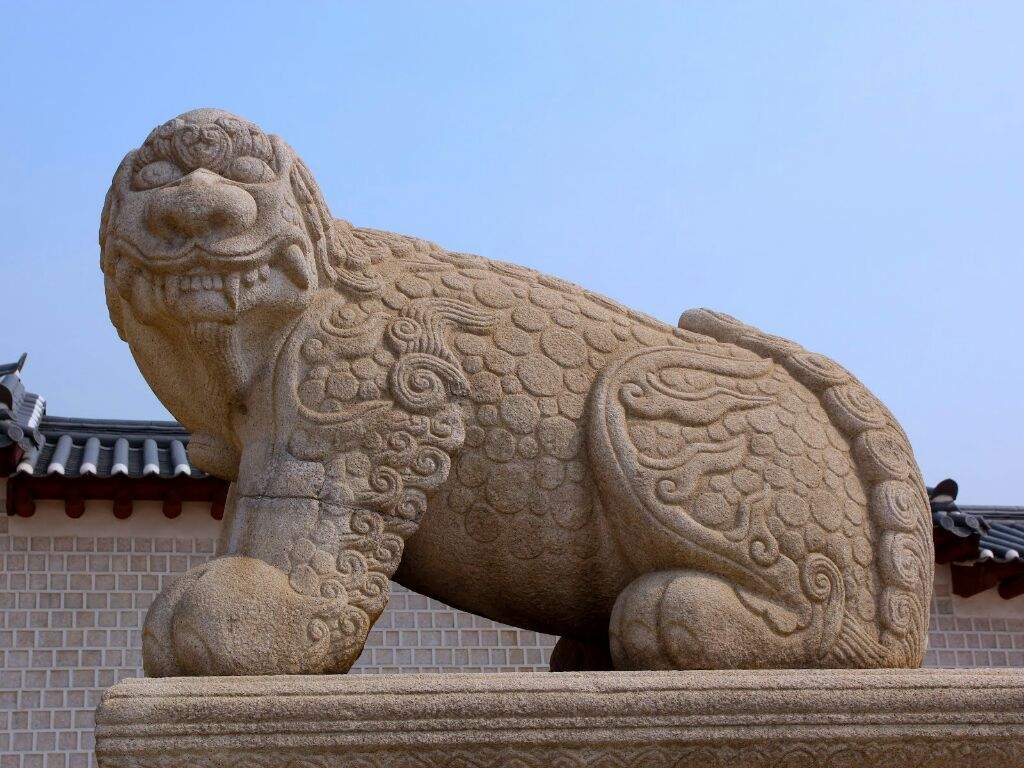
The haetae is a horned mythological beast that is prevalent in East Asian mythology. In this article, we will learn exactly what it is, why it is important, and references to the haetae in popular culture. In Korean folklore, the haetae is a scaled goat-like creature that was believed to know right from wrong, and helped pass judgement on guilty and innocent parties. It may sometimes be known as haitai or haechi. It was often depicted as a muscular beast with a likeness to a lion, goat, and unicorn. Indeed, in English language references to the haetae, it is sometimes known as a “unicorn lion”.
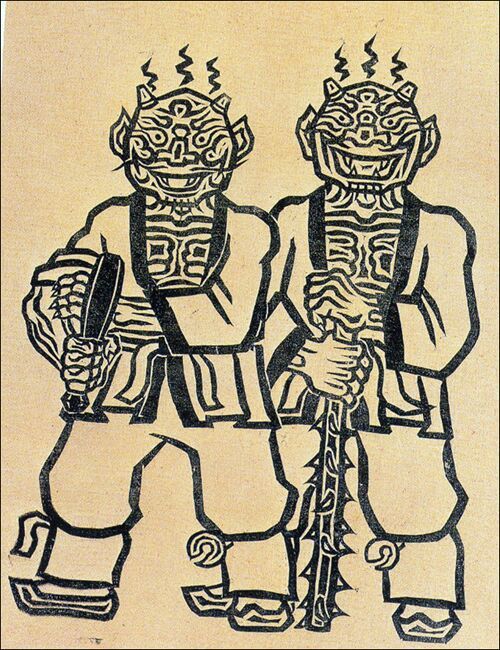
Dokkaebi (Korean: 도깨비) are legendary creatures from Korean mythology and folklore. Dokkaebi, also known as “Korean goblins”, are nature deities or spirits possessing extraordinary powers and abilities that are used to interact with humans, at times playing tricks on them and at times helping them. Legends describe different dokkaebi in many forms, and dokkaebi often wear hanbok. The earliest known documentation of dokkaebi is in the Silla-era tale of “Lady Dohwa and Bachelor Bihyeong” from the Memorabilia of the Three Kingdoms compiled during the Goryeo period. Dokkaebi are featured in many folk tale anthologies compiled during the Joseon period.
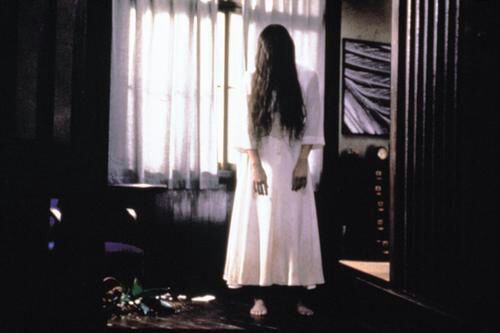
The maiden ghost is a female ghost. She was a victim of a false accusation before she died. Therefore, she has a grudge. She wanders over the world taking revenge on people related to her death. She always wears white clothes and has a pale complexion and red lips which spill blood. The maiden ghost is the most common and fearful in Korea. Like her, there is a bachelor ghost which is male. This ghost also harbors a grudge. However, his grudge is just that he didn’t marry before he died. If he holds a wedding ceremony, he can ascend to Heaven. The egg ghost just looks like a common person when seen from behind. However, if you see its face, you will know why this ghost is called the egg ghost. It doesn’t have eyes, a nose, a mouth, or ears, si it brings up the image of eggs. This ghost lives deep in a mountain and surprises people who go over the mountain.
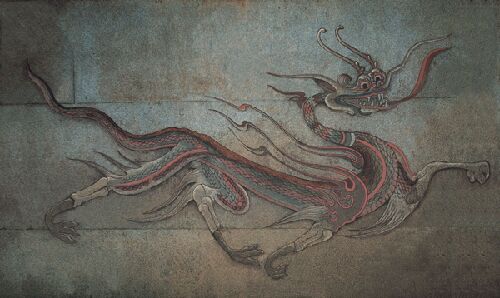
Dragons are important in Korean mythology, so how did they come to Korea? The simple answer is “from China.” Archaeologists have discovered dragon statues in Henan that date back to the Stone Age. The culture that made those statues probably shared the dragon concept with the ancestors of ethnic Koreans.

The samjoko is the three-legged crow, and was considered a symbol of power during the Goguryeo Dynasty – superior to even the dragon and the bonghwang! In East Asian mythologies, the samjoko is also a symbol of the Sun and is said to live there.
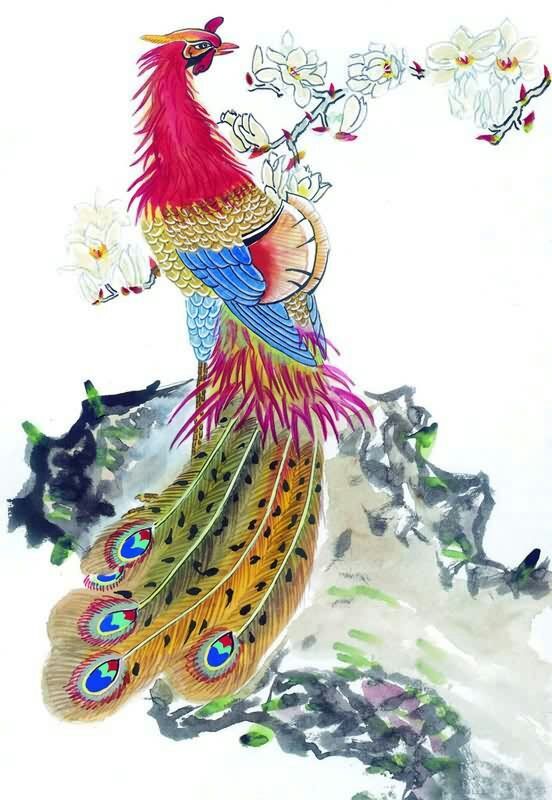
Bonghwang are mythological birds found in Sinospheric mythology that reign over all other birds. The males were originally called fèng and the females huáng, but such a distinction of gender is often no longer made and they are blurred into a single feminine entity so that the bird can be paired with the Chinese dragon, which is traditionally deemed male. The bonghwangs body symbolizes the celestial bodies: the head is the sky, the eyes are the sun, the back is the moon, the wings are the wind, the feet are the earth, and the tail is the planets.

Three Korean gods are responsible for the population of one of Korea’s largest islands. These three Korean gods are brothers who lived together on Jeju island. They are the children of Halmang, the giantess. They would spend their time hunting animals, and enjoying the land. At this point there weren’t any humans living on Jeju island, but this changed when the gods found a mysterious chest on the island. Curiosity filled them, they opened the chest and there was a messenger inside. The messenger informed the gods that inside the chest were gifts from the ruler of Pyeongyang. The chest contained a calf, a colt, and five grains of rice (barley, rice, soybean, foxtail millet, and millet), but more significantly, there were three brides inside the chest. The messenger left on a cloud, and each of the gods took one of the brides for themselves, and formed their own clans on different parts of the island. This is where Jeju’s three major clans originate from, although all of the clans claim to be descendants of the first born of the gods. Legend says that all of Jeju’s current clans descended from these three mythical clans.

Jumong – The Master Archer Who Founded Korea
Dangun
Hwanung
Hwanin
Munjeon Bonpuri “Annals of the Door”
Hwangok
Kimsuro
Igong Bonpuri: The Story of Hallakgungi
Solmundae Halmang
Koeulla, Pueulla and Yangeulla

The Dragon Kings of the Four Seas are kings of underwater sea palaces that correspond with the four cardinal directions. During droughts and floods local gentry and government officials led the communities in different sacrifices and religious rites so as to appease the dragons. There are actually more than four, but these particular four are the highest status of Dragon Kings. In Chinese mythology, they are celebrated as deities of the sea like Mazu. But unlike her, they wreak havoc, and she is protective.











